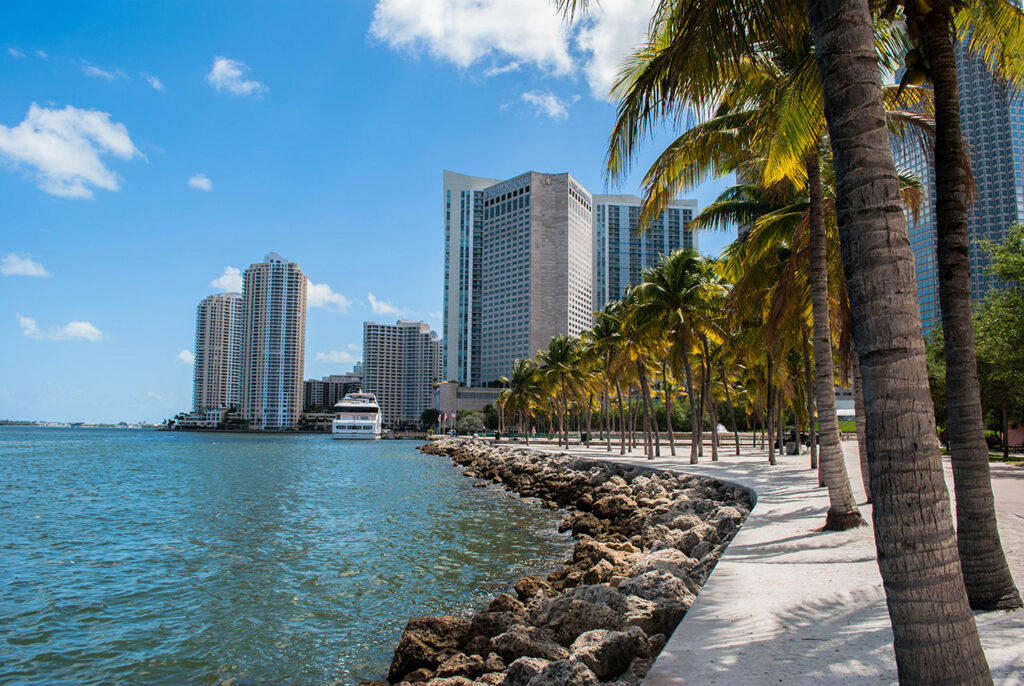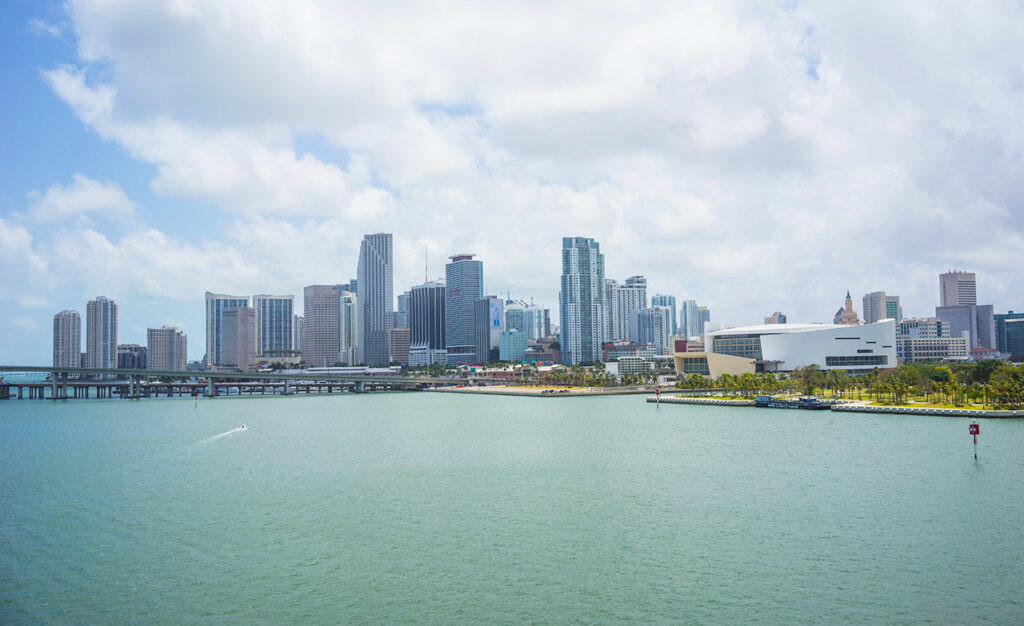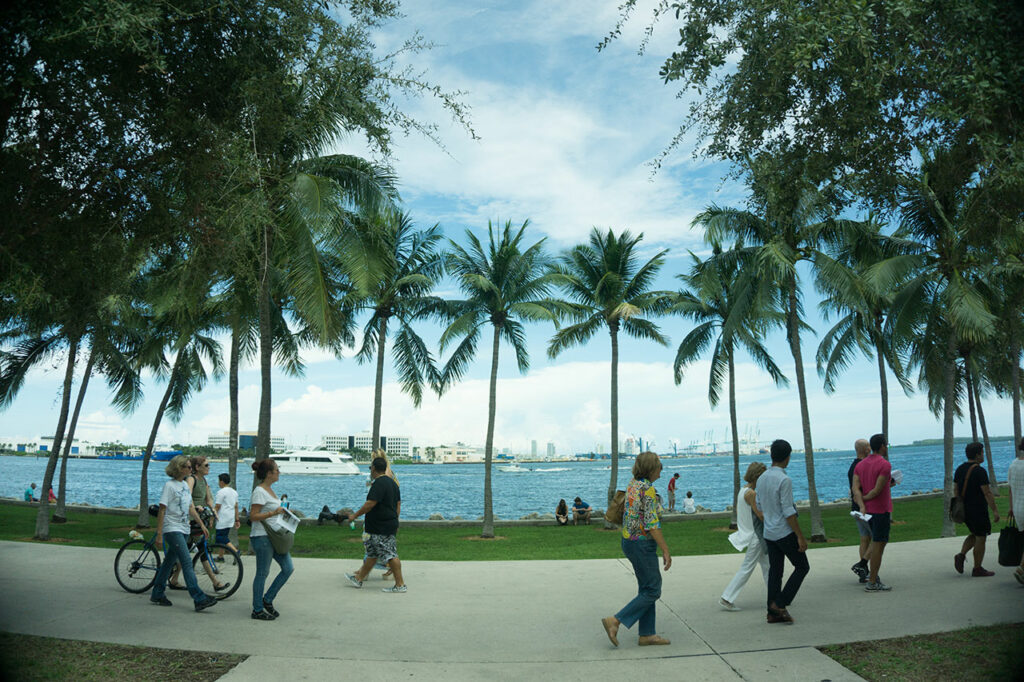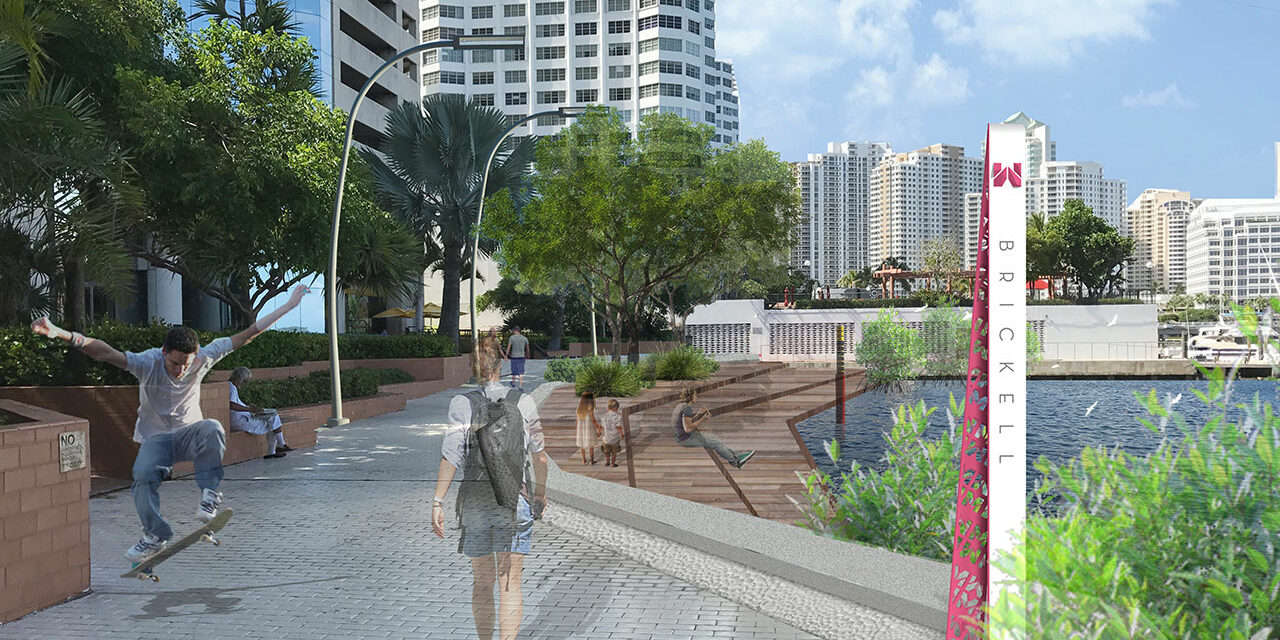MIAMI–(BUSINESS WIRE)–Faced with the threat of rising seas, stronger hurricanes and intensifying tidal flooding, business and civic leaders in the City of Miami now have a suite of recommendations for adapting to the long-term impacts of climate change, preserving and enhancing quality of life along the Downtown Miami waterfront, and encouraging smart growth in and around Florida’s largest urban district. Late June the Miami Downtown Development Authority (DDA) announced that through a partnership between the City of Miami and Miami DDA, the Urban Land Institute (ULI) convened a panel of 10 experts from across the U.S. to study climate-related threats within the City’s urban core, formulate recommendations for hardening the neighborhood’s infrastructure and protecting its natural and manmade assets, and identify potential funding solutions for bringing resiliency projects to life.
As part of the ULI assessment, panelists toured Downtown Miami’s vulnerable areas by land and water and interviewed more than 80 local stakeholders, producing a set of recommendations that were unveiled to the public on June 7, 2019 at Miami City Hall. The panel focused on strengthening the Biscayne Bay waterfront as Downtown Miami’s first line of defense against rising seas, transforming the Miami River into a mixed-use district that bridges the gap between the water and surrounding neighborhoods such as Little Havana and Allapattah, and incentivizing responsible development along an inland ridge of high-lying ground. A more comprehensive report will be released by ULI in the coming months.
“Transforming Miami into a more resilient community means shifting our perception – from viewing the water as a threat, to thinking of the water as a natural asset that we should embrace,” said City of Miami Commission Chairman Ken Russell, who also chairs the Miami DDA. “The Urban Land Institute’s preliminary findings provide us with a roadmap for enacting design, infrastructure, zoning and financing strategies that will ensure Miami sustains its growth as a world-class city – not for years, not for generations, but forever.”

Photo credit: The Miami DDA
Following is a summary of the panel’s recommendations:
- Update zoning and building guidelines to incorporate resilience principles, including adapting the code to meet minimum thresholds for insurance coverage and real estate market demand
- Refine and adopt proposed design guidelines for the Miami Baywalk, to include resilient design features for a five-mile stretch of shoreline along Biscayne Bay and the Miami River
- Promote the use of living shorelines across key regulatory agencies at all levels of government – City, County, State and Federal
- Install green infrastructure to reduce flood and heat impacts along the waterfront and in Miami’s urban neighborhoods
- Create a place-based organization or conservancy to facilitate private investment and management for the urban waterfront
- Build consensus among community stakeholders through demonstration projects, such as creating a living shoreline along the Museum Park waterfront
- Explore resilient financing tools that leverage Downtown Miami’s real estate market, including tools like Transferable Development Density, tax increment financing, and new property taxes that generate dedicated revenue for resilience initiatives
- Develop a long-range, comprehensive master planning document that incorporates resilience as a key element to guide development in Downtown and along the waterfront
- Strengthen community preparedness in vulnerable locations through neighborhood outreach, emergency management, and local partnerships
The panel’s recommendations coincide with a surge of development, investment and in-migration within Miami’s urban core and along the Miami Riverfront. Home to a daytime population of more than 250,000 people and more than 92,000 full-time residents – representing a 40 percent increase since 2010 – Greater Downtown Miami is among the country’s fastest-growing residential and commercial neighborhoods. The three-square-mile district encompasses real estate assets valued at nearly $40 billion, including more than 53,000 residential units, 25 million square feet of office space, 8,000 hotel rooms, several interconnected transit systems, and a host of public museums, parks and cultural venues.

Photo credit: The Miami DDA
“Miami enlisted this panel of experts with the goal of gathering independent perspective on how we plan, design and pay for the changes we need to make along our waterfronts to adapt and thrive in this changing climate,” explains Jane Gilbert, Chief Resilience Officer for the City of Miami. “The ULI panel recommendations both validate the critical importance of the steps the City has already taken, including the updates to our Stormwater Master Plan, Miami21 and initial infrastructure investments through the Miami Forever Bond and motivates the City to continue to strengthen interagency partnerships and resident and business engagement needed to move forward with innovative design and financing solutions.”
Scientific research indicates that Miami, like many coastal cities, faces the prospect of rising seas and warmer temperatures over the coming decades. Water levels are expected to rise between two and two-and-a-half feet by 2060, according to the Southeast Florida Regional Climate Change Compact. At the same time, the number of 90-degree days in Miami is expected to rise from 130 to 180 days per year by 2080.

Photo credit: The Miami DDA
“Downtown Miami is experiencing an incredible period of economic and urban growth, and the presence of an accessible and continuous waterfront is among the district’s most valuable assets,” observed panel chair Ladd Keith, Chair of the Sustainable Built Environments program at the University of Arizona. “Miami is already making strides toward becoming a stronger community in the face of a changing climate through collaborations like the Resilient305 strategy, and now the City must learn how to protect from, live with and create value from the water. That process begins with ushering in built and living infrastructure and quality of life upgrades along the waterfront, exploring forward-looking regulatory, zoning and policy changes, identifying creative financing solutions, and prioritizing community education and preparedness.”
Keith was joined by panel vice chair Michelle Beaman Chang, founder and chief executive officer, Imby Community, Inc., Washington, D.C.; Jason Bonnet, vice president of development, Brookfield Properties, San Francisco, California; Samia Byrd, deputy county manager, Arlington County Government, Arlington, Virginia; John Macomber, senior lecturer in the finance unit, Harvard Business School, Harvard University, Cambridge, Massachusetts; Michael Rodriguez, leader, market research and insights, mid‐Atlantic region, CBRE, Inc., Washington, D.C.; Susannah Ross, landscape architect, Boston, Massachusetts; Matt Steenhoek, vice president of development, PN Hoffman, Washington, D.C.; Byron Stigge, founder, Level Infrastructure, New York, New York and Jay Valgora, founder and principal, Studio V Architecture, New York, New York.
A video recording of the panel’s June 7, 2019 presentation is available online here. The full presentation deck can be downloaded from the ULI website.
About the Miami Downtown Development Authority
The Miami DDA is an independent agency of the City of Miami funded by a special tax levy on properties in its district boundaries. It is governed by a 15-member Board comprised of three public appointees and 12 downtown property owners, residents and/or workers who are tasked with overseeing the direction of the agency and setting policy. The agency is committed to grow, strengthen and promote the economic health and vitality of downtown Miami. As an autonomous agency of the City of Miami, the Miami DDA advocates, facilitates, plans, and executes business development, planning and capital improvements, and marketing and communication strategies. Visit www.MiamiDDA.com for more information.




